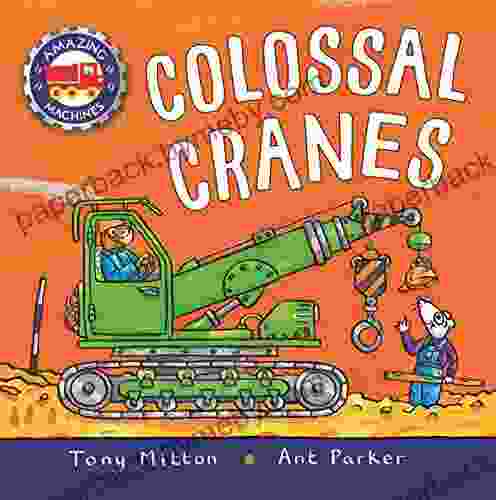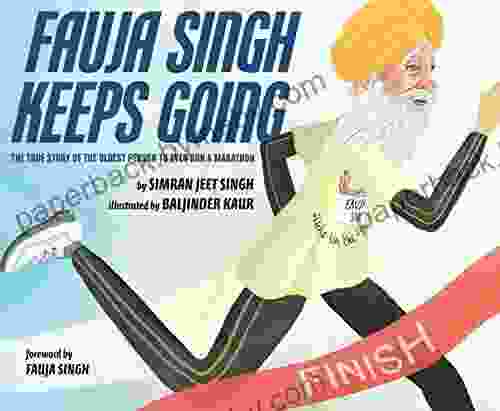Everything You Need To Know To Bake Perfect Pies: Getting Started With Numerous

Pies are one of the most classic and beloved desserts, and they can be enjoyed year-round. Whether you're looking for a simple fruit pie for a summer picnic or a decadent chocolate pie for a holiday feast, there's a pie out there for everyone.
5 out of 5
| Language | : | English |
| File size | : | 8202 KB |
| Text-to-Speech | : | Enabled |
| Enhanced typesetting | : | Enabled |
| Lending | : | Enabled |
| Screen Reader | : | Supported |
| Print length | : | 108 pages |
But baking a perfect pie can seem like a daunting task. With so many different ingredients and techniques to master, it's easy to get overwhelmed. That's why we've put together this comprehensive guide to pie baking, covering everything you need to know to get started.
Chapter 1: Ingredients
The first step to baking a perfect pie is choosing the right ingredients. Here are the key ingredients you'll need:
- Flour: All-purpose flour is the most common type of flour used for pie crusts. It's important to use a high-quality flour for best results.
- Butter: Butter is the key to a flaky, buttery crust. Use unsalted butter and make sure it's cold before you start working with it.
- Sugar: Sugar adds sweetness and helps to brown the crust. You can use granulated sugar or brown sugar, depending on the type of pie you're making.
- Salt: Salt balances the sweetness of the crust and helps to enhance the flavor of the filling.
- Filling: The filling is the heart of the pie. You can use any type of filling you like, from fruit to cream to chocolate.
Chapter 2: Crust
The crust is one of the most important parts of a pie. It provides the structure for the pie and it can also be a delicious part of the dessert. There are two main types of pie crust: shortcrust pastry and flaky pastry.
Shortcrust pastry is a simple, sturdy dough that is made with flour, butter, and water. It is the most common type of pie crust used for savory pies.
Flaky pastry is a more delicate dough that is made with flour, butter, and water, plus a bit of sugar. It is the most common type of pie crust used for sweet pies.
To make a perfect pie crust, it is important to keep the ingredients cold. This will help to prevent the gluten in the flour from developing, which will make the crust tough. You should also work quickly and avoid overworking the dough.
Chapter 3: Fillings
The filling is the other main component of a pie. It can be made with any type of fruit, cream, or chocolate. When choosing a filling, it is important to consider the type of crust you are using. For example, a shortcrust pastry will hold up better to a wet filling, while a flaky pastry is better suited for a dry filling.
Here are some tips for making a perfect pie filling:
- Use fresh fruit whenever possible. Fresh fruit will give your pie the best flavor.
- If you are using frozen fruit, make sure to thaw it completely before using it.
- Sweeten the filling to taste. The amount of sugar you add will depend on the sweetness of the fruit.
- Add spices to the filling for extra flavor. Common spices used in pie fillings include cinnamon, nutmeg, and ginger.
Chapter 4: Baking
Once you have made your crust and filling, it is time to bake the pie. Here are some tips for baking a perfect pie:
- Preheat the oven to the correct temperature before you start baking the pie.
- Bake the pie on a baking sheet to prevent the bottom from burning.
- Cover the edges of the crust with foil to prevent them from burning.
- Bake the pie until the crust is golden brown and the filling is bubbling.
- Let the pie cool for at least 1 hour before serving.
Baking a perfect pie is a skill that takes practice. But with the right ingredients and techniques, you can create beautiful and delicious pies that will impress your friends and family. So what are you waiting for? Get started today and bake the perfect pie!
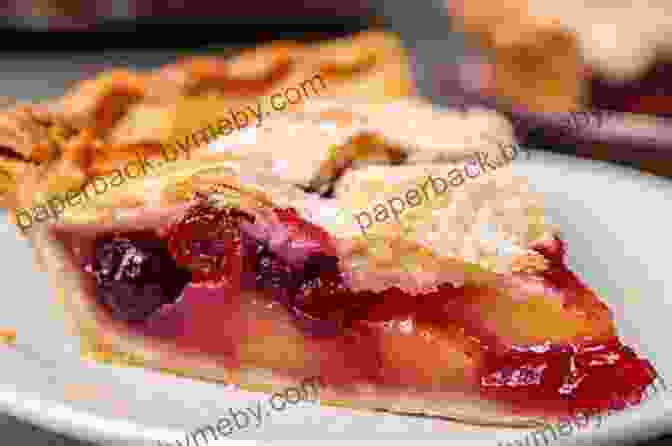
5 out of 5
| Language | : | English |
| File size | : | 8202 KB |
| Text-to-Speech | : | Enabled |
| Enhanced typesetting | : | Enabled |
| Lending | : | Enabled |
| Screen Reader | : | Supported |
| Print length | : | 108 pages |
Do you want to contribute by writing guest posts on this blog?
Please contact us and send us a resume of previous articles that you have written.
 Book
Book Novel
Novel Page
Page Chapter
Chapter Text
Text Story
Story Genre
Genre Reader
Reader Library
Library Paperback
Paperback E-book
E-book Magazine
Magazine Newspaper
Newspaper Paragraph
Paragraph Sentence
Sentence Bookmark
Bookmark Shelf
Shelf Glossary
Glossary Bibliography
Bibliography Foreword
Foreword Preface
Preface Synopsis
Synopsis Annotation
Annotation Footnote
Footnote Manuscript
Manuscript Scroll
Scroll Codex
Codex Tome
Tome Bestseller
Bestseller Classics
Classics Library card
Library card Narrative
Narrative Biography
Biography Autobiography
Autobiography Memoir
Memoir Reference
Reference Encyclopedia
Encyclopedia Seth Kantner
Seth Kantner Kev Ashcroft
Kev Ashcroft W David Pierce
W David Pierce Penguin Young Readers Licenses
Penguin Young Readers Licenses Michael Boyle
Michael Boyle Tara Brach
Tara Brach Kevin Brownlow
Kevin Brownlow Metin Bektas
Metin Bektas Sandra Wright
Sandra Wright John Berger
John Berger Slavomir Rawicz
Slavomir Rawicz Ken Xiao
Ken Xiao Kiara Valdez
Kiara Valdez Rory D Nelson
Rory D Nelson Mario Cesare
Mario Cesare Kim Fedyk
Kim Fedyk Kory Kogon
Kory Kogon Laura Hulleman
Laura Hulleman Kevin Marx
Kevin Marx Kerry Rupe
Kerry Rupe
Light bulbAdvertise smarter! Our strategic ad space ensures maximum exposure. Reserve your spot today!

 Hunter MitchellUnlock the Full Power of Cycling: A Comprehensive Guide to the Full Power...
Hunter MitchellUnlock the Full Power of Cycling: A Comprehensive Guide to the Full Power... Arthur MasonFollow ·9.3k
Arthur MasonFollow ·9.3k Vic ParkerFollow ·3k
Vic ParkerFollow ·3k William PowellFollow ·11k
William PowellFollow ·11k Fredrick CoxFollow ·8k
Fredrick CoxFollow ·8k Howard PowellFollow ·19k
Howard PowellFollow ·19k Juan ButlerFollow ·3.4k
Juan ButlerFollow ·3.4k Troy SimmonsFollow ·5.7k
Troy SimmonsFollow ·5.7k Ezekiel CoxFollow ·16.1k
Ezekiel CoxFollow ·16.1k
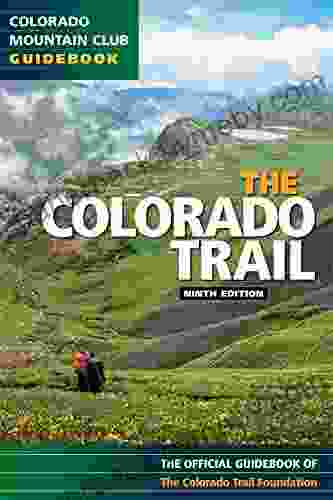
 Isaac Asimov
Isaac AsimovEmbark on an Epic Adventure: The Colorado Trail 9th...
Unveiling the Treasures of the Colorado...

 Clinton Reed
Clinton ReedUltimate Football Heroes: Uncover the Gridiron Greatness...
Enter the World...
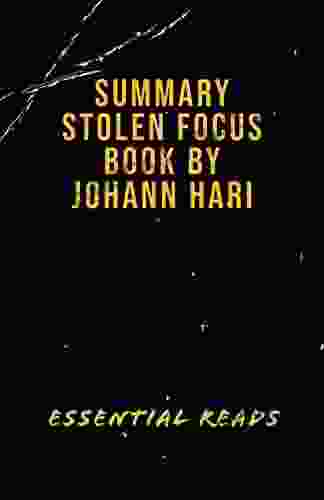
 Ibrahim Blair
Ibrahim BlairUnveiling the Secrets of Stolen Focus: A Journey to...
In today's relentless digital...

 Colt Simmons
Colt SimmonsRediscover the Founding Father's Vision: Thomas Jefferson...
Immerse Yourself in the Unedited Words of...

 Juan Butler
Juan ButlerExcel in Language Learning: The Ultimate Self-Study...
Unlock Your Language Potential with Our...
5 out of 5
| Language | : | English |
| File size | : | 8202 KB |
| Text-to-Speech | : | Enabled |
| Enhanced typesetting | : | Enabled |
| Lending | : | Enabled |
| Screen Reader | : | Supported |
| Print length | : | 108 pages |







